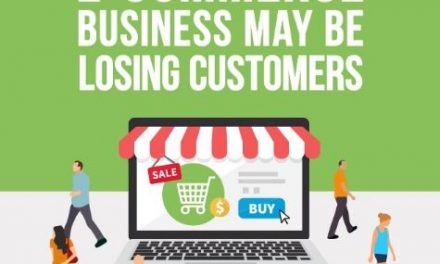 Today's article is on eCommerce Analytics, and I welcome guest author Michelle Deery.
Today's article is on eCommerce Analytics, and I welcome guest author Michelle Deery.
Michelle Deery is the content writer for Heroic Search, a digital marketing agency based in Tulsa who specializes in writing about marketing and eCommerce.
Her work has been published in Entrepreneur Magazine.
Her content helps eCommerce companies boost their ROI.
eCommerce Analytics
We know what it’s like: All you wanted to do was launch an online store and sell products.
Then, someone told you that you had to write a blog, implement an SEO strategy …
… and now you’re being told to work on your analytics.
In other words, your brand new secret weapon to success.
Analytics help store owners monitor all sorts of data, from “who our customers are” to “how well our landing page is performing”.
But do you really need eCommerce analytics?
If you’re unsure about what analytics can do for your store, in this article we take a look at the key metrics you need to be tracking with your analytics in order to demonstrate why you need – or don’t need.
Returning Customers
According to research, it costs a store less to sell to repeat customers than it does to acquire new ones all the time. Returning customers are where the money is.
But how do you know what percentage of returning visitors are translating into revenue?
This is something that analytics can help with.
Most eCommerce platforms, such as Shopify, provide you with detailed customer reports that give you the low-down on your percentage of returning customers.
For example, Shopify breaks things down into first time vs. returning customers so that you can see where most of your sales are coming from.
Why is this information important?
If most of your sales are coming from first time customers, it could tell you that you’re not doing a good job of building trust with them. People are shopping with you once and then disappearing.
This isn’t good for a sustainable, long-term company. If you’re seeing a decline in returning customers, you need to work on a strategy that helps to build trust and customer loyalty.
Shopping Abandonment
Cart abandonment is a major problem for eCommerce stores – but you won’t even be aware of this if you’re not bothering with analytics.
According to data, the average eCommerce store is dealing with 69.89% of abandoned carts.
That’s a lot. It means that we’re so close to making a sale … but not close enough.
However, it isn’t just cart abandonment that you need to watch out for. A customer can abandon their shopping journey anywhere in your funnel. But again, unless you’re using analytics, you won’t be able to pinpoint exactly where they’re dropping out.
All you’ll know is that they’re dropping out, which by itself is useless information.
The easiest way to check on your funnel abandonment is by setting up a conversion funnel in your Google Analytics. This will tell you where your customers are giving up. They could be bailing out at the product page, the category pace, the cart and so on.
Once you’ve got this data, you can start to work out a way to prevent these abandonments. For example, Shopify comes with an in-built autoresponder that makes it easier to win back those abandoned carts.
Logos
Analytics can give you so many powerful insights into what customers like and dislike about your store.
For, example, logos.
Can a logo really boost or decrease sales?
Blogger Matthew Woodward wanted to find out what effect two different logos would have on his websites bounce rate, so he ran an A/B test. He created a simple logo himself – which you can also easily do with a logo tool maker – and then used this split test plugin to see how his new logo fared against his old one.

The results? He found that a professionally designed logo performed the best. But what was really interesting was that site visitors reacted very differently to the same logo pointing left and right. It was the same logo, but – for whatever reason – the right facing logo had a slight increase in conversions.
Matthew used the data from his analytics to increase page visits by almost a minute, the time spent on site by 29 seconds, while decreasing the bounce rate by 3.18%.
What you can take from this is that:
- It’s important that you have a logo
- It’s important that you split-test a few logos to boost your sales
Segmented Conversions
We all know that conversion rates are important, right?
But what you’re missing out on if you don’t bother with analytics are segmented conversions, which are even more powerful.
A conversion rate is easy to work out. All we do is divide the number of site visitors who make a purchase with the total number of site visitors. It’s simple stuff.
But analytics allow you to go deeper so that you understand much more about your customers.
For example, you can segment your conversion rates by traffic source. This matters because once you know where most of your customers are coming from – Google, social media etc – you can then double down on these traffic sources.
It’s also a good idea to segment your conversion rates by device type. Mobile usage overtook desktop for the first ever time in 2016, and it’s projected that $1.8 trillion of eCommerce sales in 2018 will come from mobile devices.

Why does this matter to you? If your mobile conversion rates are way down on your desktop conversion rates, it suggests that you’ve got a problem on the mobile version of your site. Once you’re armed with this data, you can take a look and find the problems, before fixing them.
As you can see, it’s pretty clear that, if you want your eCommerce store to be an amazing success, you need to start using analytics. However, one final point before I go:
The Right Page Builder Matters
If you’re not using an eCommerce platform like Shopify, it’s really important that whatever page builder you do use allows for easy integration with Google Analytics.
For example, the likes of Elementor allows Google Analytics to be easily integrated, and it also provides different landing page templates.
Moreover, WordPress itself provides lots of additional plug-ins, such as A/B test plugins, that make it easy for you to track your key metrics.
Conclusion
The best thing about eCommerce analytics? Once you’re in the swing of things and start seeing results, the morale you will inevitably feel over the boost in ROI will encourage you even more to continue on your eCommerce journey.










